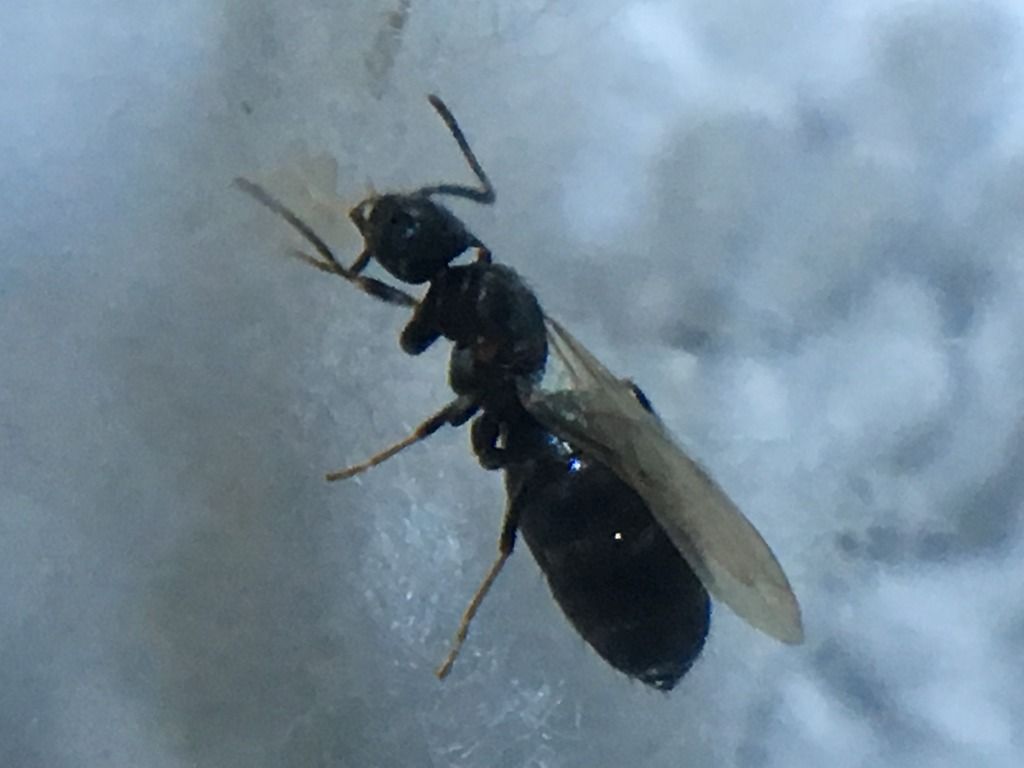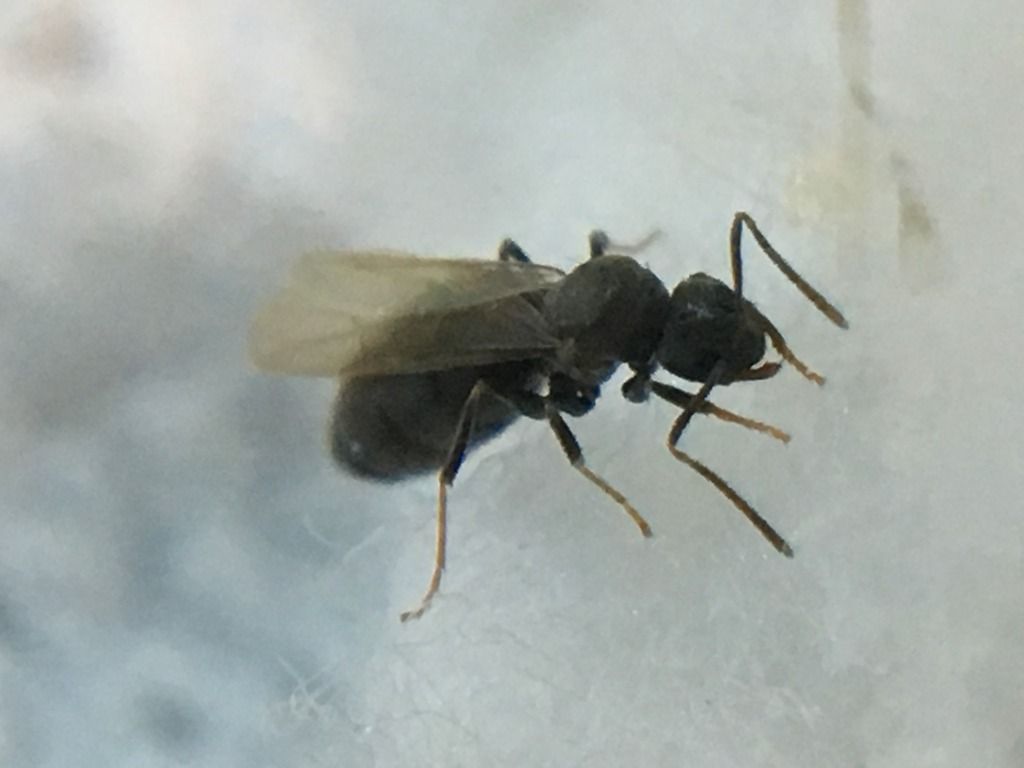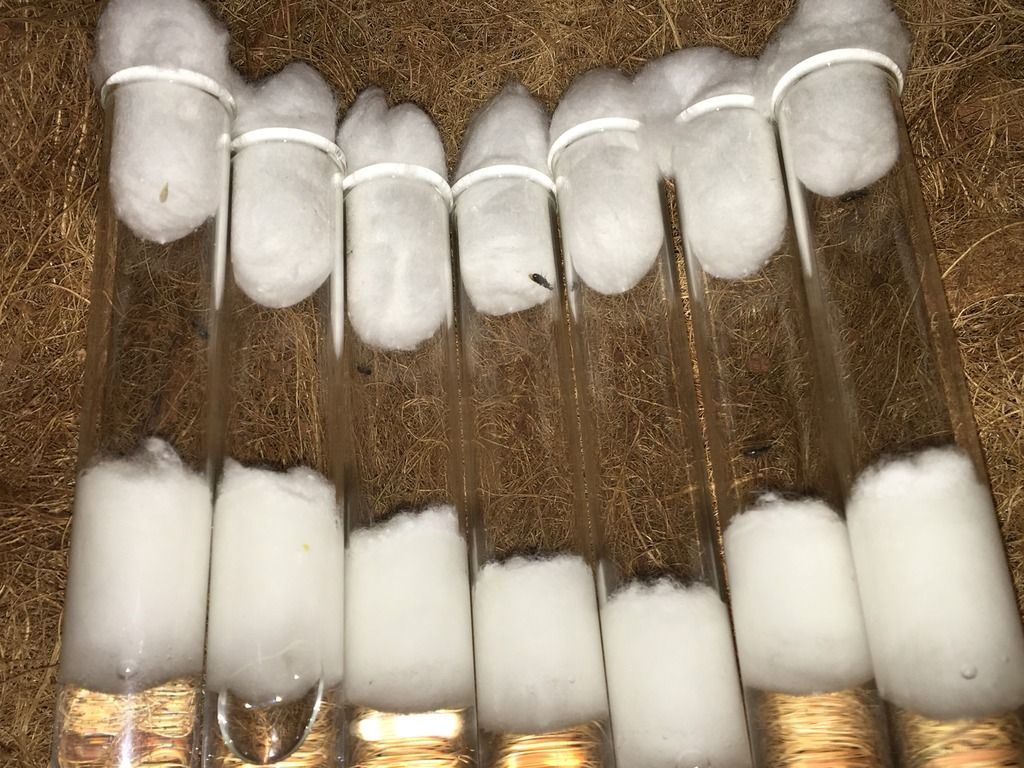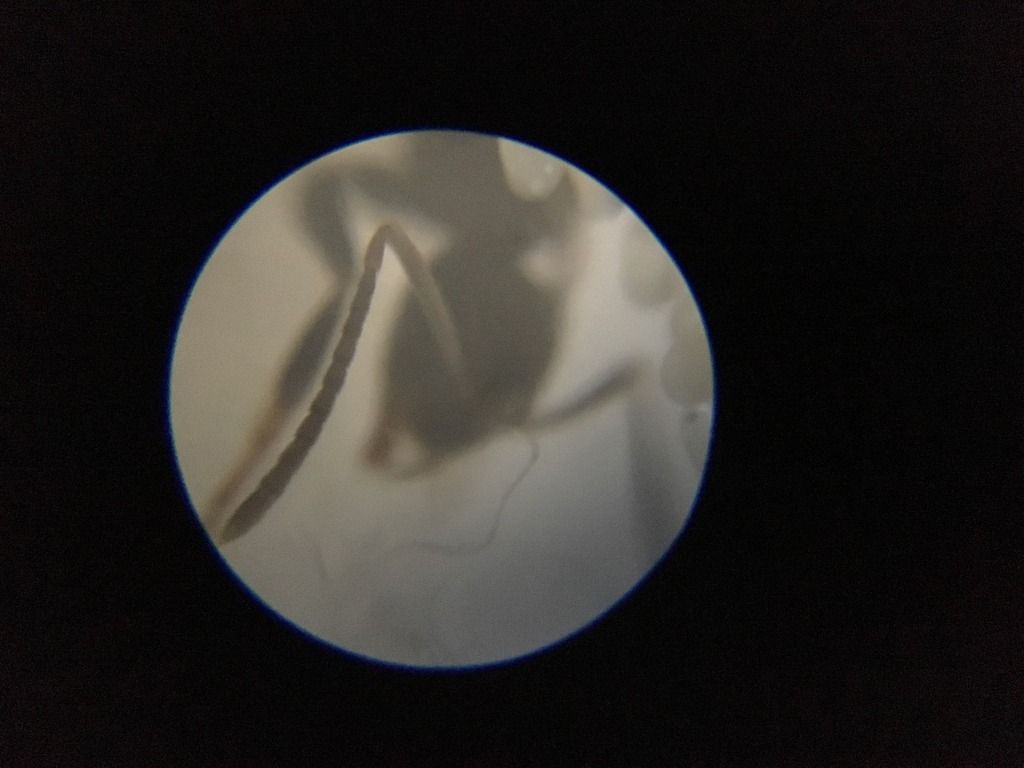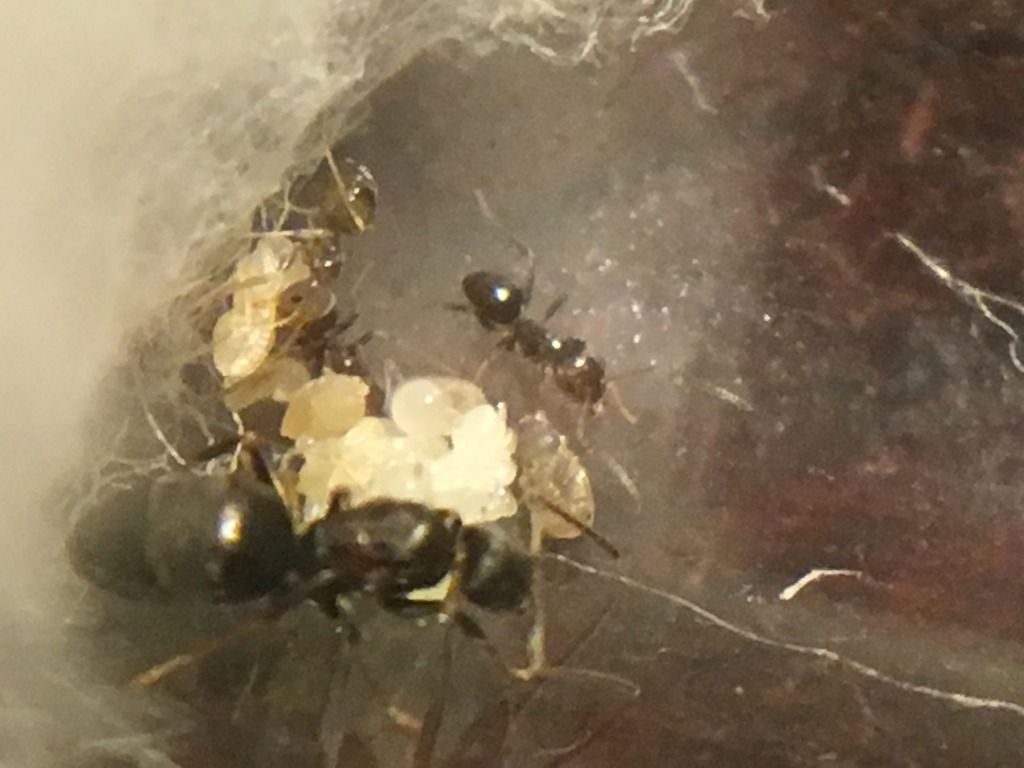1. Location of collection: Savannah, GA (in my pool)
2. Date of collection: March 28th, 2016
3. Habitat of collection: I live near a small oak/pine forest (forest is big enough to support white tailed deer though) surrounded by marsh.
4. Length (from head to gaster): ~4mm give or take 1mm
5. Color, hue, pattern and texture: All black
6. Distinguishing characteristics: None that I can think of.
7. Anything else distinctive: N/A
8. Nest description: I couldn't find a nest for them. They just kept falling into the pool from above.
